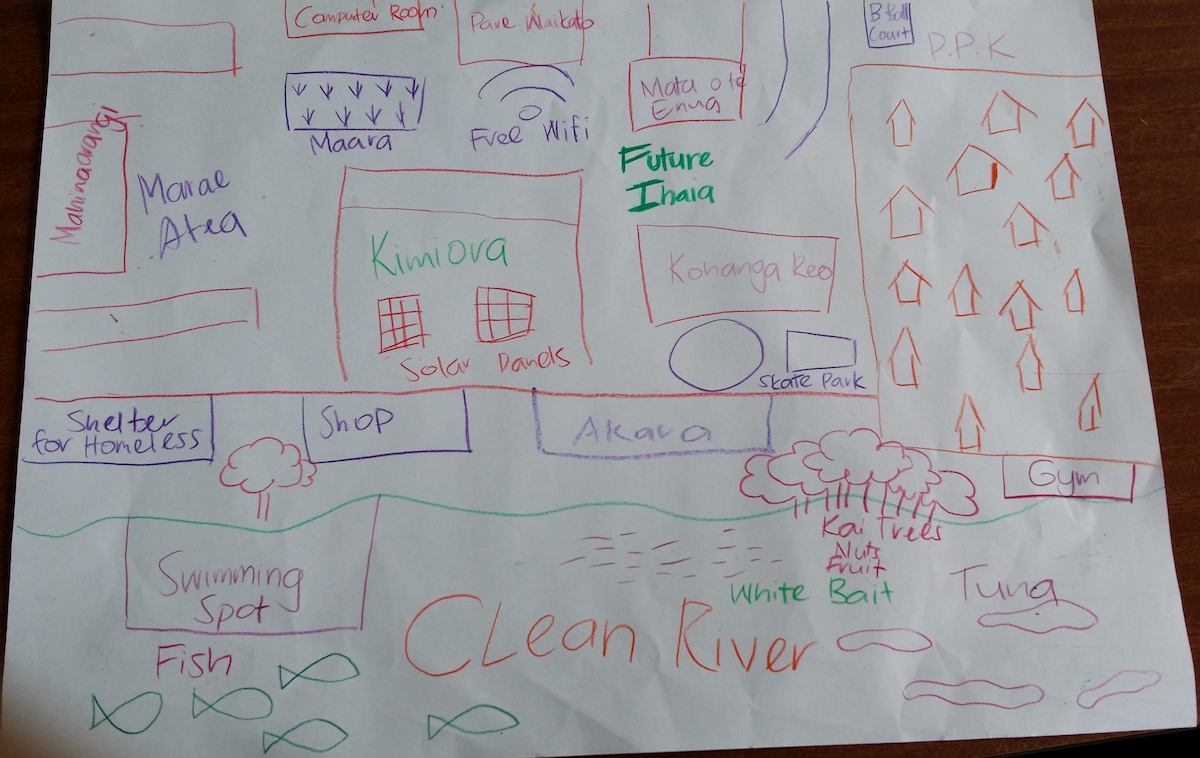The Ake Ake Model
A model for exploring the past, present and future.
When planning a restoration project, it can be difficult to know where to begin.
One method is to use a model like the Ake Ake Model, which is a cultural mapping exercise using pictures and imagery to help whānau (families), hapū (subtribes), and iwi (tribes) draw out and identify cultural indicators.
The model is a culturally defined way to explore and express restoration initiatives to strengthen the cultural community. Lorraine Dixon (Ngāti Whāwhākia) and John Te Maru (Ngāti Hauā), researchers from Waikato-Tainui (tribal people of the Waikato Region), developed this model for whānau, hapū, and iwi participation.
Ake Ake (meaning forever and ever) measures the changes observed over time by whānau living in their environment and how change can affect the way they interact with their environment.
The model is produced in three stages:
- Whānau learn about how people lived in the past
- Whānau identify the present situation
- Whānau draw what they want the future to look like for iwi in 50 years’ time

The whanau represented by three generations (rangatahi, pakeke, and kaumātua) undertaking the Ake Ake model exercise – Step 1.3: Mapping the past, present and future.
How to run the exercise
Step 1
1.1: The Ake Ake model exercise is explained to the whānau, what they will be learning, and how they can use the model for future planning for their whānau.
1.2: Obtain photos of the past and present – use these to describe place and upbringing.
1.3: Mapping the past – this requires kaumātua (elders) input.
Mapping the present – this requires kaumātua, pakeke (adults), and rangatahi (youth) input.
Mapping the future – this requires kaumātua and rangatahi input.
1.4: Within each time period (past, present, and future) the following five components are discussed:
- Environmental
- Economic
- Cultural
- Social and recreational
- Health and well-being
1.5: Each member presents to the whānau and is video recorded and archived for future generations.
Step 2: Identify common themes
Step 3: Summarise the themes
Step 4: Future planning
The model allows whānau to think about past changes the current situation of the element on which they want to focus, e.g. their marae and the environment in which they live, such as their awa (rivers), roto (lakes) and repo (wetlands).
Whānau are encouraged to decide what they would like for the future of their resources, and, most important, for the future generations who will live there.
These ideas and aspirations are drawn by whānau as a pictorial representation of their aspirations, which are then archived for future generations.
The Ake Ake Model encourages 100% participation, and whānau enjoy it because they are contributing towards both their future and that of their mokopuna (grandchildren).

Mapping the future – rangatahi pictorial representation of their marae and tupuna awa o Waikato (ancestral river – Waikato River), as they would like to see in 50 years’ time.
Publication: Taura Y, Dixon L, Turner M (2017). The Ake Ake model – forever and ever. In: Taura Y, van Schravendijk-Goodman C, Clarkson B eds 2017. Te reo o te repo – the voice of the wetland: connections, understandings and learnings for the restoration of our wetlands. Hamilton, New Zealand: Manaaki Whenua – Landcare Research and Waikato Raupatu River Trust. 23–39 Pp.
Portfolio: Plant Biodiversity & Biosecurity within Ecosystem Resilience
Project: SSIF Resilient Wetlands Project
Project Manager: Dr Beverley Clarkson, plant ecologist
Project Leader: Yvonne Taura, kairangahau Māori
